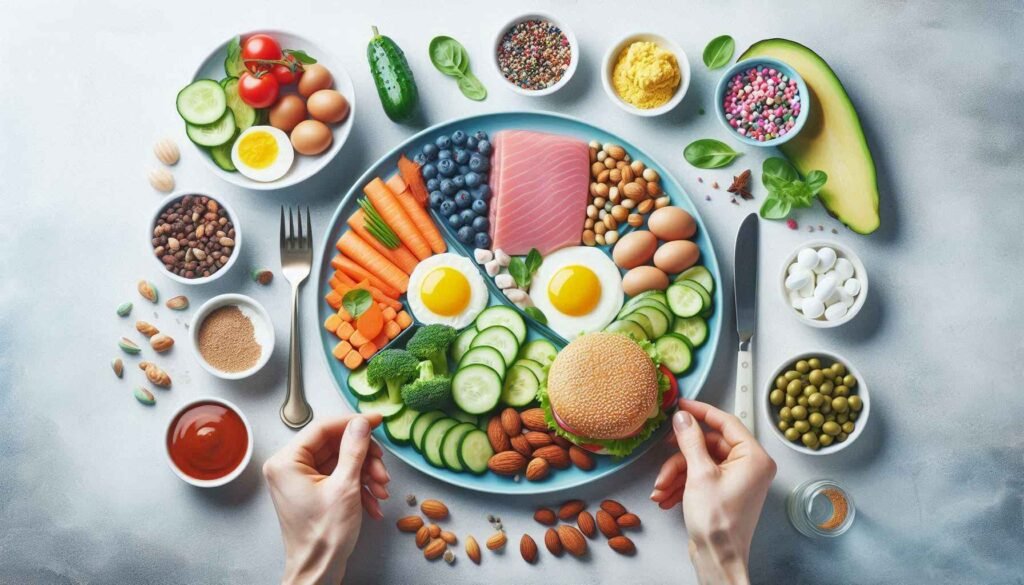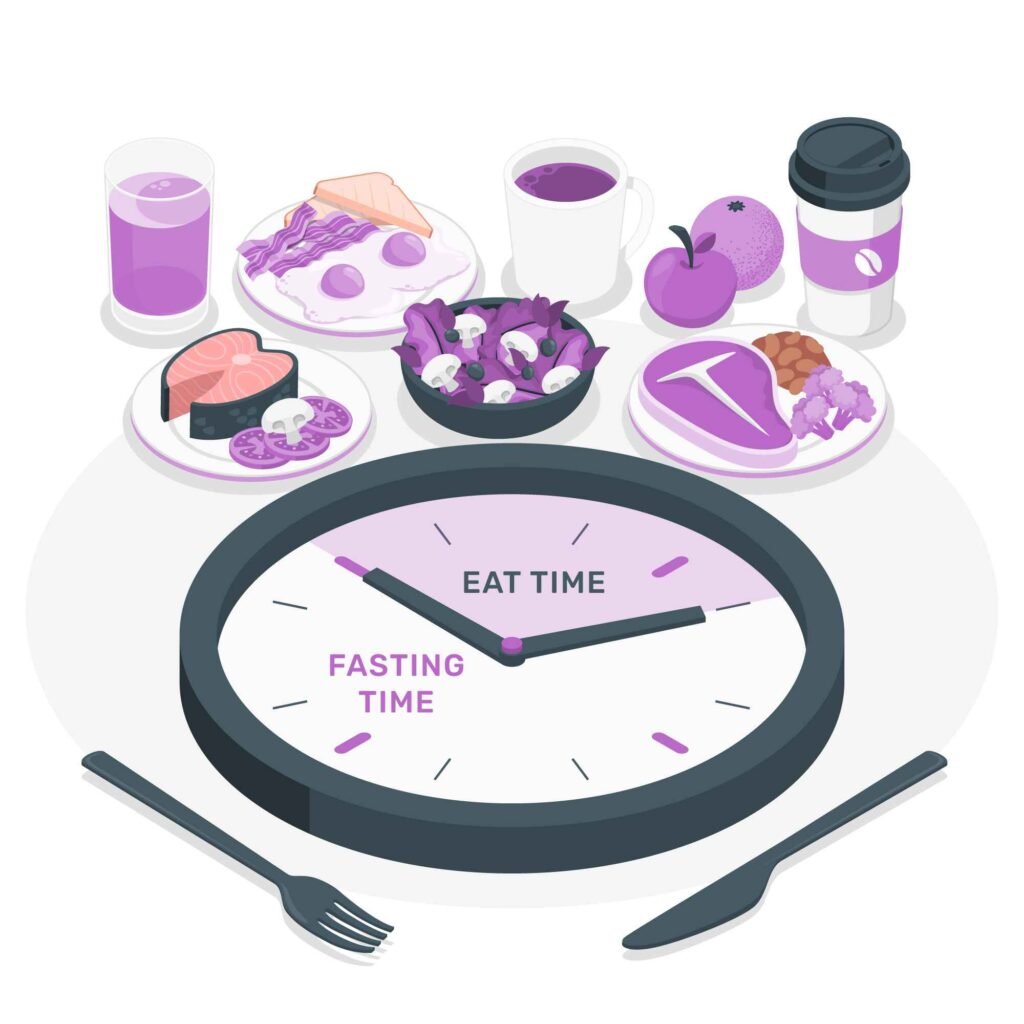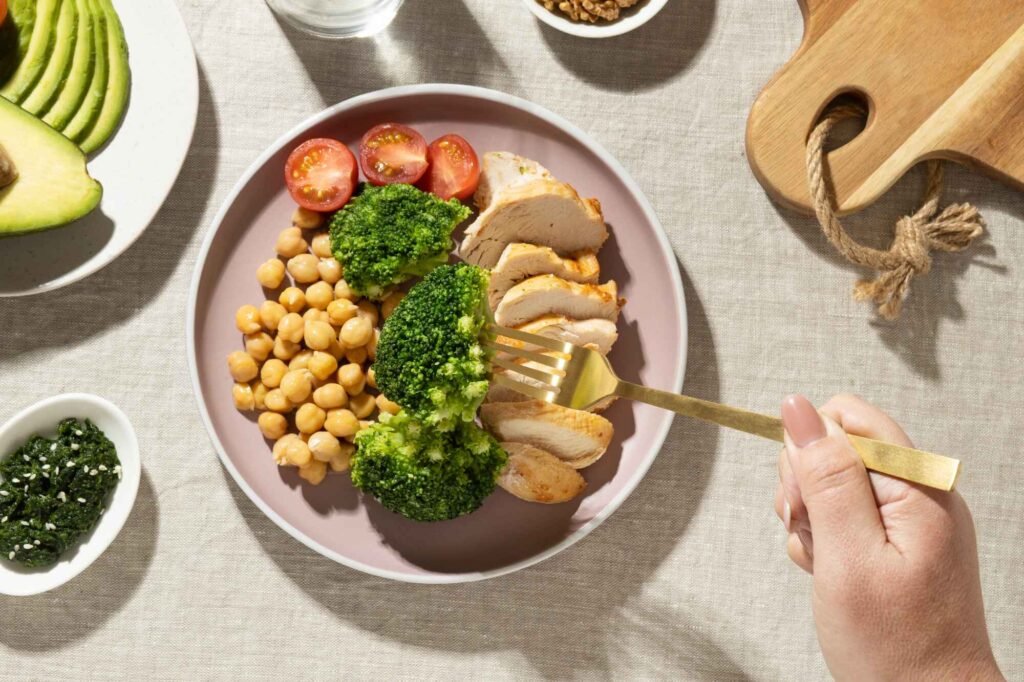
How to Build a Balanced Plate: Macros, Micros, and Portion Sizes
In today’s world of ever-changing diet trends, it’s easy to get lost in the buzzwords. From counting calories to intermittent fasting, everyone has an opinion on what a “healthy” diet should look like. But what if it were simpler than that? Building a balanced plate isn’t about restriction or fads; it’s about nourishing your body with the right nutrients in the right proportions. Whether you’re trying to lose weight, gain muscle, or maintain your current lifestyle, knowing how to balance your plate can set you up for success. Let’s explore how to create a plate that satisfies both your taste buds and your health goals.
What is a Balanced Plate?
A balanced plate means incorporating different food groups in proportions that fuel the body efficiently and provide essential nutrients. The concept often includes:
- Half the Plate: Filled with vegetables and fruits.
- One Quarter: Lean proteins such as chicken, fish, or legumes.
- One Quarter: Whole grains or starchy vegetables like brown rice or sweet potatoes.
- Small Amount of Healthy Fats: Such as avocado or olive oil to enhance flavor and satiety.
This approach ensures that you’re not only eating a variety of foods but also receiving a wide range of nutrients to support overall health.
Understanding Macronutrients: The Building Blocks of Your Plate
Macronutrients, or “macros,” include proteins, carbohydrates, and fats. Each plays a vital role in your body:
1. Proteins: The Body’s Building Blocks
Protein is essential for muscle growth, repair, and overall body function. It helps keep you full longer, making it a key component of a balanced diet. Sources of lean protein include:
- Chicken and Turkey: Low in fat and high in protein.
- Fish: Rich in omega-3 fatty acids, which are beneficial for heart health.
- Plant-Based Proteins: Such as lentils, tofu, and chickpeas for vegetarian options.
The portion size for proteins should be about the size of your palm, which is roughly 20-30 grams of protein. This measurement makes it easy to gauge your intake without a scale.
2. Carbohydrates: Your Body’s Primary Fuel Source
Carbs often get a bad reputation, but they are essential for providing energy. However, choosing the right kinds of carbs is crucial. Opt for complex carbohydrates that are high in fiber and have a lower glycemic index:
- Whole Grains: Like oats, quinoa, and brown rice.
- Starchy Vegetables: Such as sweet potatoes and corn.
- Legumes: Beans and lentils, which also provide protein.
A quarter of your plate should be devoted to carbs, roughly the size of a fist. Complex carbs digest slower than simple sugars, providing sustained energy and keeping blood sugar stable.
3. Fats: Essential for Absorbing Nutrients
Healthy fats aid in absorbing fat-soluble vitamins (A, D, E, and K) and support brain function. They should make up a small portion of your meal:
- Nuts and Seeds: Almonds, walnuts, and chia seeds.
- Avocado and Olive Oil: Great sources of monounsaturated fats.
- Fatty Fish: Like salmon, which contains beneficial omega-3 fatty acids.
A proper portion of fat is about the size of your thumb or a tablespoon of oil. Including fats in your meals adds flavor and keeps you feeling satisfied longer.
The Role of Micronutrients: The Small but Mighty Nutrients
Micronutrients include vitamins and minerals that are essential for overall health. These nutrients support various functions like immune health, bone strength, and energy production.
1. Vitamins: Powerhouses for Body Function
Each vitamin has a specific role. For example, Vitamin C boosts immunity and Vitamin D supports bone health. To ensure adequate vitamin intake, eat a variety of colorful fruits and vegetables:
- Leafy Greens: Such as spinach and kale, rich in Vitamins A, C, and K.
- Berries: High in antioxidants and Vitamin C.
- Citrus Fruits: Oranges and grapefruits for a Vitamin C boost.
2. Minerals: Essential for Vital Processes
Minerals like calcium, iron, and magnesium play key roles in body processes:
- Calcium: Found in dairy and fortified plant milk, it’s essential for strong bones.
- Iron: Present in red meat, beans, and spinach, helping carry oxygen in the blood.
- Magnesium: Supports muscle function and is found in nuts, seeds, and whole grains.
To cover your micronutrient needs, aim to “eat the rainbow” by incorporating a variety of plant-based foods.
Portion Sizes: How Much Should You Eat?
Portion control doesn’t mean skimping on your meals; it’s about understanding how much of each nutrient you need.
1. Hand Method for Portion Control
A simple way to measure portions is using your hand:
- Protein: Palm-sized portion.
- Carbs: Fist-sized portion.
- Fats: Thumb-sized portion.
- Veggies: Two cupped hands.
This method is practical when you don’t have measuring tools on hand and helps maintain balanced portions.
2. The Importance of Listening to Your Body
While portion control is important, it’s also essential to listen to your hunger and fullness cues. Intuitive eating can complement portion control by allowing flexibility. If you’re still hungry after eating a balanced meal, consider adding more non-starchy vegetables or a small portion of healthy fats.
Practical Examples of Balanced Meals
Here are some balanced meal ideas to get you started:
- Quinoa Salad with Grilled Chicken
- Half a Plate of Veggies: Mixed greens, cherry tomatoes, cucumber.
- Quarter Plate of Protein: Grilled chicken.
- Quarter Plate of Whole Grains: Quinoa.
- Healthy Fats: Drizzle of olive oil and some avocado slices.
- Stir-Fried Tofu with Brown Rice
- Half a Plate of Veggies: Bell peppers, broccoli, and carrots.
- Quarter Plate of Protein: Tofu, stir-fried.
- Quarter Plate of Carbs: Brown rice.
- Healthy Fats: Sprinkle of sesame seeds.
- Breakfast Bowl with Oats and Berries
- Carbs: ½ cup cooked oats.
- Protein: Greek yogurt or a scoop of protein powder.
- Micronutrients: Fresh berries.
- Healthy Fats: A handful of nuts or a spoonful of nut butter.
These meals provide a variety of nutrients while keeping portion sizes in check.
Benefits of Building a Balanced Plate
Adopting the balanced plate method offers several benefits:
- Sustained Energy: Balanced meals prevent blood sugar spikes and crashes, keeping you energized throughout the day.
- Improved Digestion: Fiber from vegetables and whole grains aids in digestive health.
- Better Weight Management: Portion control helps avoid overeating while still feeling satisfied.
- Enhanced Overall Health: The variety of nutrients supports immunity, muscle function, and mental well-being.
Conclusion
Building a balanced plate isn’t about strict rules; it’s about creating a sustainable and enjoyable way of eating. By understanding macronutrients, micronutrients, and portion sizes, you can tailor meals to meet your nutritional needs and lifestyle goals. Embrace the journey of balanced eating, and remember that every small step toward healthier choices makes a difference.
This approach to building a balanced plate can empower readers to create nutritious meals that support their health in the long term. By focusing on nutrient-rich foods and appropriate portion sizes, you can enjoy a variety of flavors and nutrients while maintaining a balanced diet.
4o



